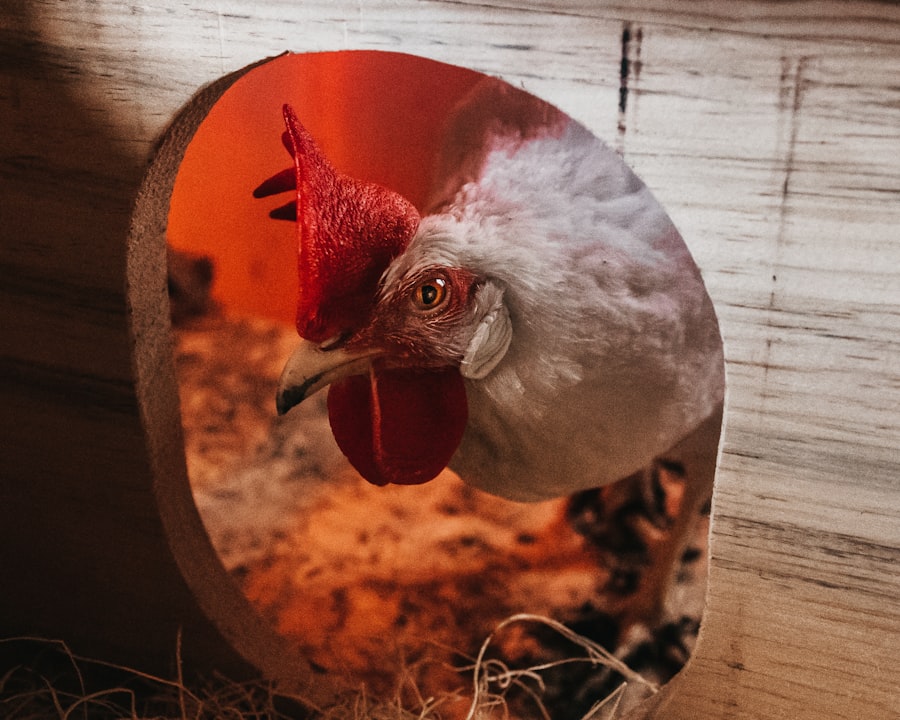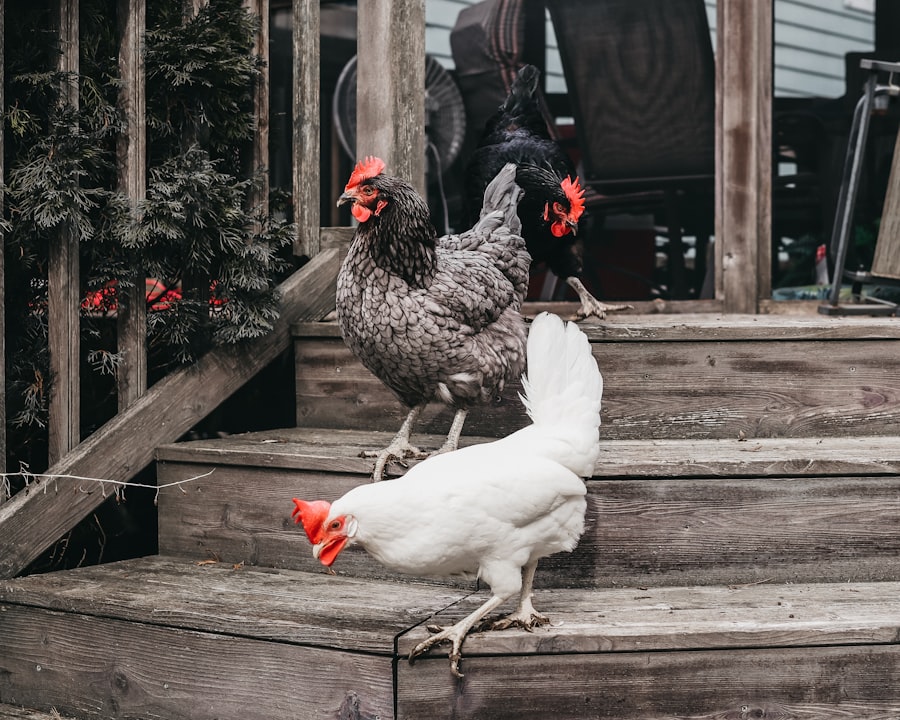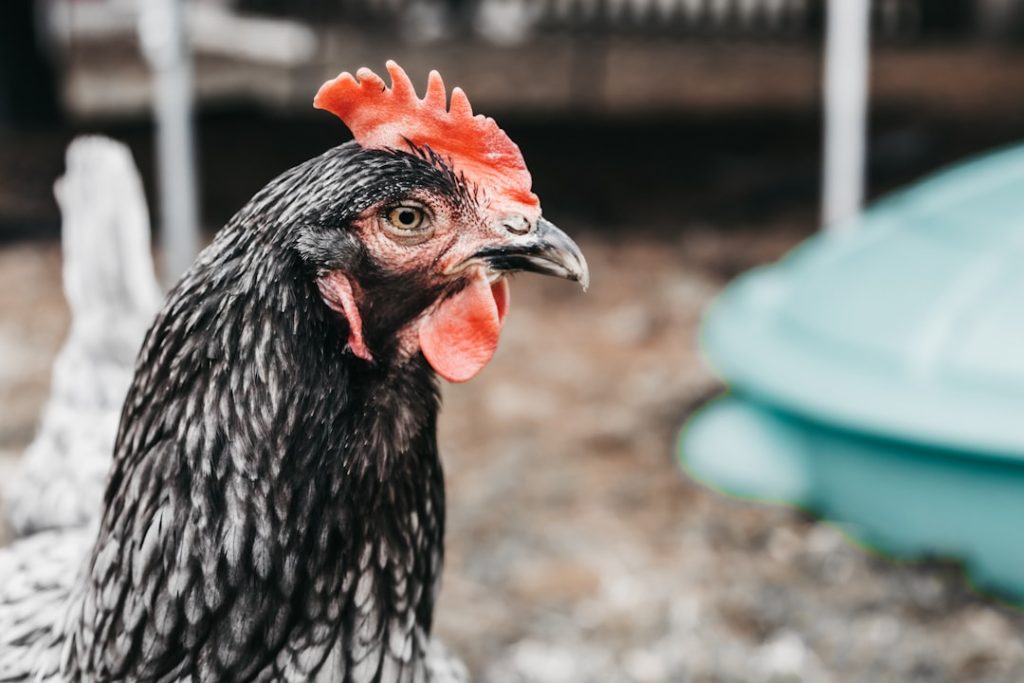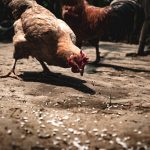Hawks are natural predators that pose a significant threat to free-range chickens. These birds of prey possess exceptional vision and sharp talons, enabling them to be highly effective hunters. Hawks are known to attack unsuspecting chickens by swooping down and capturing them for consumption.
This behavior presents a considerable risk to free-range chickens, particularly when they are left exposed in open areas. Hawks are primarily active during daylight hours, making it crucial for chicken owners to be cognizant of the potential danger they represent. Free-range chickens are domesticated fowl that are permitted to roam freely and search for food in a natural setting.
While this lifestyle provides numerous advantages, such as access to fresh vegetation and insects, it also leaves them vulnerable to various predators, including hawks. It is essential for chicken owners to recognize the inherent risk that hawks present to their free-range flocks in order to implement appropriate protective measures.
Table of Contents
- 1 Creating Safe Roosting Areas for Free Range Chickens
- 2 Providing Adequate Cover and Shelter in the Chicken Run
- 3 Using Visual Deterrents to Keep Hawks Away
- 4 Implementing Sound Deterrents to Scare Off Hawks
- 5 Supervising Free Range Chickens During Vulnerable Times
- 6 Seeking Professional Help and Advice for Hawk Deterrence
- 7 FAQs
- 7.1 What are the main threats to free range chickens from hawks?
- 7.2 How can I protect my free range chickens from hawks?
- 7.3 Are there any specific breeds of chickens that are more resistant to hawk attacks?
- 7.4 What time of day are hawks most likely to attack free range chickens?
- 7.5 Are there any legal methods to deter hawks from attacking free range chickens?
Key Takeaways
- Hawks pose a significant threat to free range chickens, as they are natural predators.
- Creating safe roosting areas for free range chickens can help protect them from hawk attacks.
- Providing adequate cover and shelter in the chicken run can give chickens a safe place to hide from hawks.
- Using visual deterrents, such as reflective objects or scarecrows, can help keep hawks away from free range chickens.
- Implementing sound deterrents, such as predator calls or noise-making devices, can scare off hawks and protect free range chickens.
Creating Safe Roosting Areas for Free Range Chickens
Secure Roosting Areas
One of the key strategies for protecting free range chickens from hawk attacks is to provide them with safe roosting areas. This can be achieved by constructing secure and enclosed coops or shelters where the chickens can rest and seek refuge from potential predators. These roosting areas should be designed with sturdy walls and roofs to prevent hawks from gaining access to the chickens.
Accommodating Natural Behavior
Additionally, it is important to ensure that the coop is equipped with perches and nesting boxes to accommodate the chickens’ natural roosting behavior.
Portable Protection
Chicken owners can also consider using portable chicken tractors or movable coops to allow their flock to roam freely while still being protected from hawks. These structures can be moved around the property to provide fresh foraging opportunities for the chickens while minimizing their exposure to potential predators.
Reducing the Risk of Hawk Attacks
By creating safe roosting areas for free range chickens, chicken owners can significantly reduce the risk of hawk attacks and ensure the safety of their flock.
Providing Adequate Cover and Shelter in the Chicken Run

In addition to secure roosting areas, it is important to provide adequate cover and shelter within the chicken run to protect free range chickens from hawk attacks. This can be achieved by planting dense shrubs and bushes around the perimeter of the chicken run to create natural barriers that can help deter hawks from swooping down on the chickens. These plants can also provide additional cover for the chickens to hide under in the event of a hawk sighting.
Furthermore, chicken owners can consider installing shade cloth or netting over the chicken run to provide additional protection from aerial predators like hawks. This can help reduce the risk of hawk attacks while still allowing the chickens to enjoy the benefits of free ranging. By providing adequate cover and shelter in the chicken run, chicken owners can create a safer environment for their free range flock and minimize the risk of hawk attacks.
Using Visual Deterrents to Keep Hawks Away
Visual deterrents can be an effective tool for keeping hawks away from free range chickens. These deterrents work by creating visual disturbances that can deter hawks from approaching the area where the chickens are located. One common visual deterrent is the use of reflective objects such as shiny tape or CDs hung around the chicken coop or run.
The reflective surfaces can create flashes of light that may startle hawks and discourage them from getting too close to the chickens. Another visual deterrent that can be effective in deterring hawks is the use of predator decoys such as owl or hawk statues. These decoys can create the illusion of a larger predator in the area, which may intimidate hawks and discourage them from hunting in the vicinity.
Additionally, moving decoys such as kites or balloons can mimic the movement of a larger bird of prey, further deterring hawks from approaching the area.
Implementing Sound Deterrents to Scare Off Hawks
In addition to visual deterrents, sound deterrents can also be effective in scaring off hawks and protecting free range chickens. One popular sound deterrent is the use of predator calls or distress calls that mimic the sounds of distressed or predatory birds. These calls can create a sense of danger in the area, causing hawks to reconsider approaching the vicinity where the chickens are located.
Another sound deterrent that can be effective in deterring hawks is the use of noise-making devices such as air horns or whistles. These devices can create loud and sudden noises that can startle hawks and discourage them from hunting in the area. Additionally, motion-activated sound devices can be used to emit sudden bursts of noise when hawks are detected, further deterring them from approaching the free range chickens.
Supervising Free Range Chickens During Vulnerable Times

Supervise During Peak Hawk Activity
During vulnerable times such as dawn and dusk, when hawks are most active, it is crucial for chicken owners to keep a close eye on their free-range flock to ensure their safety. By supervising the chickens during these times, owners can quickly intervene if a hawk is spotted in the vicinity. This may involve herding the chickens into secure roosting areas or using visual and sound deterrents to scare off the hawk.
Implement a Buddy System
Chicken owners can also consider implementing a buddy system for their free-range chickens during vulnerable times. By pairing up chickens or grouping them together, they can provide mutual protection and support against potential hawk attacks. This can help minimize the risk of individual chickens being targeted by hawks and increase their chances of survival during vulnerable times.
Additional Measures for Enhanced Safety
In addition to supervision and the buddy system, chicken owners can take other measures to enhance the safety of their free-range flock. This may include using netting or other physical barriers to protect the chickens, as well as providing a safe and secure coop for them to retreat to in case of an attack. By taking these precautions, chicken owners can help ensure the well-being and safety of their flock.
Seeking Professional Help and Advice for Hawk Deterrence
For chicken owners who are facing persistent hawk predation issues, seeking professional help and advice for hawk deterrence may be necessary. Consulting with experienced poultry farmers, wildlife experts, or animal control professionals can provide valuable insights and recommendations for protecting free range chickens from hawk attacks. These professionals may offer guidance on implementing effective deterrent strategies, securing roosting areas, and creating a safer environment for free range chickens.
Additionally, professional help may also involve installing advanced deterrent systems such as electronic fencing or motion-activated sprinkler systems that can help deter hawks from approaching the chicken coop or run. These systems can provide an added layer of protection for free range chickens and help minimize the risk of hawk attacks. By seeking professional help and advice for hawk deterrence, chicken owners can gain access to specialized knowledge and resources that can help safeguard their flock from potential predators.
In conclusion, protecting free range chickens from hawk attacks requires a comprehensive approach that includes understanding the threat posed by hawks, creating safe roosting areas, providing adequate cover and shelter, using visual and sound deterrents, supervising chickens during vulnerable times, and seeking professional help and advice when necessary. By implementing these strategies, chicken owners can effectively deter hawks and ensure the safety and well-being of their free range flock.
If you’re looking for tips on how to keep your free range chickens safe from hawks, you might also be interested in this article on creating a secure chicken coop. Hannah Montana Chicken Coop offers valuable insights on building a coop that provides protection for your chickens from predators like hawks. Building a secure coop is just one of the many ways to ensure the safety of your free range chickens.
FAQs
What are the main threats to free range chickens from hawks?
Hawks are a common threat to free range chickens as they are natural predators and are known to attack and kill chickens.
How can I protect my free range chickens from hawks?
There are several methods to protect free range chickens from hawks, including using netting or wire mesh to cover the chicken run, providing shelters and hiding spots for the chickens, and using scare tactics such as reflective objects or noise makers.
Are there any specific breeds of chickens that are more resistant to hawk attacks?
While no breed of chicken is completely immune to hawk attacks, some larger and more aggressive breeds such as Rhode Island Reds or Plymouth Rocks may be more likely to defend themselves against hawks.
What time of day are hawks most likely to attack free range chickens?
Hawks are most active during the day, particularly in the early morning and late afternoon, so it is important to be especially vigilant during these times.
Are there any legal methods to deter hawks from attacking free range chickens?
In the United States, hawks are protected under the Migratory Bird Treaty Act, so it is illegal to harm or kill them. However, there are legal methods such as using scare tactics or providing physical barriers to protect free range chickens from hawk attacks.
Meet Walter, the feathered-friend fanatic of Florida! Nestled in the sunshine state, Walter struts through life with his feathered companions, clucking his way to happiness. With a coop that’s fancier than a five-star hotel, he’s the Don Juan of the chicken world. When he’s not teaching his hens to do the cha-cha, you’ll find him in a heated debate with his prized rooster, Sir Clucks-a-Lot. Walter’s poultry passion is no yolk; he’s the sunny-side-up guy you never knew you needed in your flock of friends!







